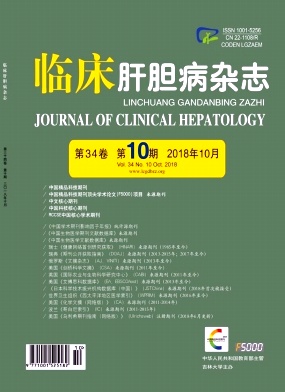|
[1]CHANG BX.An excerpt of EASL-EASD-EASO clinical practiceguidelines for the management of non-alcoholic fatty liver disease (2016) [J].J Clin Hepatol, 2016, 32 (8) :1450-1454. (in Chinese) 常彬霞.《2016年欧洲肝病学会、欧洲糖尿病学会和欧洲肥胖学会临床实践指南:非酒精性脂肪性肝病》摘译[J].临床肝胆病杂志, 2016, 32 (8) :1450-1454.
|
|
[2]DAY CP, JAMES OF.Steatohepatitis:a tale of two“hits”?[J].Gastroenterology, 1998, 114 (4) :842-845.
|
|
[3]TAO R, COLEMAN MC, PENNINGTON JD, et al.Sirt3-mediated deacetylation of evolutionarily conserved lysine 122 regulates Mn SOD activity in response to stress[J].Mol Cell, 2010, 40 (6) :893-904.
|
|
[4]CHEN Y, ZHANG J, LIN Y, et al.Tumour suppressor SIRT3deacetylates and activates manganese superoxide dismutase to scavenge ROS[J].EMBO Rep, 2011, 12 (6) :534-541.
|
|
[5]XUE L, WU Z, JI XP, et al.Effect and mechanism of salvianolicacid B on the myocardial ischemia-reperfusion injury in rats[J].Asian Pac J Trop Med, 2014, 7 (4) :280-284.
|
|
[6]CHEN YS, LEE SM, LIN YJ, et al.Effects of Danshensu and Salvianolic Acid B from Salvia miltiorrhiza Bunge (Lamiaceae) on cell proliferation and collagen and melanin production[J].Molecules, 2014, 19 (2) :2029-2041.
|
|
[7]WANG R, YU XY, GUO ZY, et al.Inhibitory effects of salvianolic acid B on CCl 4-induced hepatic fibrosis through regulating NF-kB/IkBαsignaling[J].J Ethnopharmacol, 2012, 144 (3) :592-598.
|
|
[8]LI H, CHEN J, XU CH, et al.Antitumor effect of salvianolic acid A and on its reversal of multidrug resisitance in A549/MTX tumor[J].Chin J Clin Pharmacol Ther, 2017, 22 (11) :1244-1247. (in Chinese) 李晖, 陈俊, 徐彩虹, 等.丹酚酸A抗肿瘤作用及对逆转A549/MTX肿瘤多药耐药的影响[J].中国临床药理学与治疗学, 2017, 22 (11) :1244-1247.
|
|
[9] ZENG W, SHAN W, GAO L, et al.Inhibition of HMGB1 release via salvianolic acid B-mediated SIRT1 up-regulation protects rats against non-alcoholic fatty liver disease[J].Sci Rep, 2015, 5:16013.
|
|
[10]XIA XH, LIU M, ZHANG ZM, et al.Antioxidant activity of water soluble constituents of Radix Salviae Miltiorrhizae in vitro[J].Chin Arch Tradit Chin Med, 2009, 27 (5) :1085-1087. (in Chinese) 夏鑫华, 刘梅, 张志敏, 等.丹参中水溶性成分体外抗氧化活性研究[J].中华中医药学刊, 2009, 27 (5) :1085-1087.
|
|
[11]SHEN CY, JIANG JG, YANG L, et al.Anti-ageing active ingredients from herbs and nutraceuticals used in traditional Chinese medicine:pharmacological mechanisms and implications for drug discovery[J].Br J Pharmacol, 2017, 174 (11) :1395-1425.
|
|
[12]WU HL, LI YH, LIN YH, et al.Salvianolic acid B protects human endothelial cells from oxidative stress damage:a possible protective role of glucose-regulated protein 78 induction[J].Cardiovasc Res, 2009, 81 (1) :148-158.
|
|
[13]ZHAO M, ZHANG Y, ZHANG L, et al.Salvianolic acid B induces autophagic cell death in giloma through m TOR/Ulk1 signaling pathway[J].Chin J Immunol, 2018, 34 (4) :549-563. (in Chinese) 赵敏, 张瑜, 张岚, 等.丹酚酸B通过m TOR/Ulk1信号通路诱导胶质瘤细胞C6自噬性死亡[J].中国免疫学杂志, 2018, 34 (4) :549-563.
|
|
[14]DONG S, LIU P, SUN MY.The pathogenesis of non-alcoholic fatty liver disease---Research progress of the“second strike”theory[J].J Clin Hepatol, 2012, 28 (7) :551-555. (in Chinese) 董姝, 刘平, 孙明瑜.非酒精性脂肪肝发病机制---“二次打击”学说研究进展[J].临床肝胆病杂志, 2012, 28 (7) :551-555.
|
|
[15]OKAMOTO Y, TANAKA S, HAGA Y.Enhanced GLUT2 gene expression in an oleic acid-induced in vitro fatty liver model[J].Hepatol Res, 2002, 23 (2) :138-144.
|
|
[16]LI J, LI X, LI Z, et al.Isofraxidin, a coumarin component improves high-fat diet induced hepatic lipid homeostasis disorder and macrophage inflammation in mice[J].Food Funct, 2017, 8 (8) :2886-2896.
|
|
[17]NASSIR F, IBDAH JA.Role of mitochondria in nonalcoholicfatty liver disease[J].Int J Mol Sci, 2014, 15 (5) :8713-8742.
|
|
[18]YESILOVA Z, YAMAN H, OKTENLI C, et al.Systemic markers of lipid peroxidation and antioxidants in patients with nonalcoholic fatty liver disease[J].Am J Gastroenterol, 2005, 100 (4) :850-855.
|
|
[19]HO JH, HONG CY.Salvianolic acids:small compounds with multiple mechanisms for cardiovascular protection[J].J Biomed Sci, 2011, 18:30.
|
|
[20]NASSIR F, ARNDT JJ, JOHNSON SA, et al.Regulation of mitochondrial trifunctional protein modulates nonalcoholic fatty liver disease in mice[J].J Lipid Res, 2018, 59 (6) :967-973.
|
|
[21]ZENG X, YANG J, HU O, et al.Dihydromyricetin ameliorates nonalcoholic fatty liver disease by improving mitochondrial respiratory capacity and redox homeostasis through modulation of SIRT3 Signaling[J].Antioxid Redox Signal, 2018.[Epub ahead of print]
|
|
[22]FINLEY LW, HAIGIS MC.Metabolic regulation by SIRT3:implications for tumorigenesis[J].Trends Mol Med, 2012, 18 (9) :516-523.
|
|
[23]ZENG W, SHAN W, GAO L, et al.Inhibition of HMGB1 release via salvianolic acid B-mediated SIRT1 up-regulation protects rats against non-alcoholic fatty liver disease[J].Sci Rep, 2015, 5:16013.
|
|
[24]LV H, WANG L, SHEN J, et al.Salvianolic acid B attenuates apoptosis and inflammation via SIRT1 activation in experimental stroke rats[J].Brain Res Bull.2015, 115:30-36.
|
|
[25]XU X, HU Y, ZHAI X, et al.Salvianolic acid A preconditioning confers protection against concanavalin A-induced liver injury through SIRT1-mediated repression of p66shc in mice[J].Toxicol Appl Pharmacol, 2013, 273 (1) :68-76.
|
|
[26]WANG YC, KONG WZ, JIN QM, et al.Effect of salvi-anolic acid B on hepatocyte apoptosis in rats with nonalcoholic steatohepatitis[J].J Clin Hepatol, 2014, 30 (12) :1325-1329. (in Chinese) 王迎春, 孔维宗, 金青梅, 等.丹酚酸B对非酒精性脂肪性肝炎大鼠肝细胞凋亡的影响[J].临床肝胆病杂志, 2014, 30 (12) :1325-1329.
|
|
[27]WANG Y, CHEN J, KONG W, et al.Regulation of SIRT3/FOXO1 signaling pathway in rats with non-alcoholic steatohepatitis by salvianolic acid B[J].Arch Med Res, 2017, 48 (6) :506-512.
|







 DownLoad:
DownLoad: